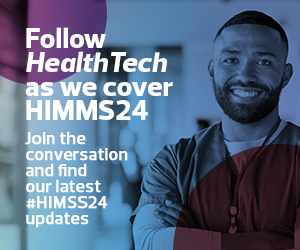Improving Virtual Care Services to Address Health Equity
Dr. Michael Ross, system chief medical information officer at Maine-based Northern Light Health, led a session about his health system’s experiences with “tightly integrating” telehealth to improve care access for a largely rural and aging patient population.
Before the COVID-19 pandemic, Northern Light Health had experimented with some virtual care services but struggled with low adoption rates and regulatory challenges. During the pandemic, the health system quickly set up telehealth services that Ross said ultimately did not address digital inequity.
“It didn’t support that lack of broadband,” Ross said, citing what he had highlighted earlier, that Maine has a significant number of households without access to high-speed internet. “It had very little friendliness in terms of provider and patient workflow.”
But, where the health system excelled was having a governance system in place for telehealth. This structure proved to be useful when looking for a telehealth partner to better integrate the service into the health system. The organization sought a solution that would be seamless for providers and patients, and would adapt with broadband needs and align with its strategic mission.
LEARN MORE: Get the details on the updated INFRAM from HIMSS.
“Integrate your workflows into your patients’ lives. Integrate your workflows into your providers’ lives,” he said.
Northern Light Health has since seen success in virtual walk-in care, scheduled synchronous visits and provider-to-provider communications. Offering virtual care services helped the health system differentiate itself in the Maine market.
However, Ross was open about the lessons learned through the health system’s journey. The virtual walk-in care was sunsetted at the end of 2023 due to in-house staffing issues. Ross recommended the use of external staffing in that case.
And though care access has opened up significantly, challenges remain with connecting homeless patients to telehealth and with expanding broadband capabilities across the state.
“The key to access is digital connectivity,” Ross said. “Digital connection is health.”













